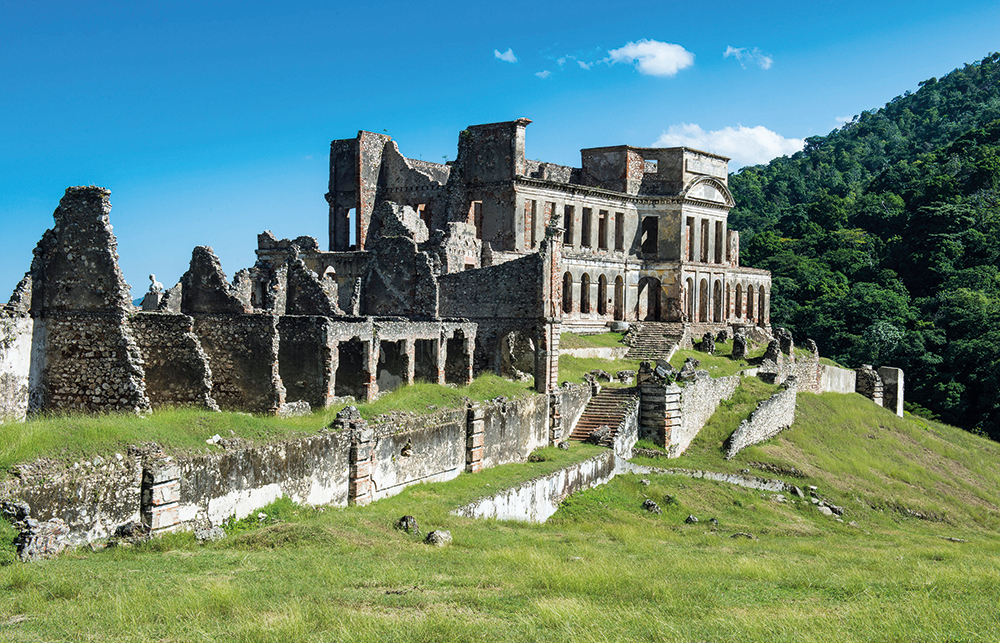Ruins, shipwrecks and lost cities are endlessly intriguing. I once went to Kolmanskop in Namibia and found myself wondering quite what it was that was so alluring. At one level it’s just a rather dowdy German town out in the desert, abandoned in 1956. But what’s special there is the sand and the way it has sifted through halls and kitchens and up the stairs. It’s as if a little bit of our history had somehow ground to halt and got left behind.
Fordlandia, built in the heart of Amazonia in 1928, is now quietly crumbling away as the forest returns
The travel writer Oliver Smith has a neat phrase for these places: ‘enclaves of the past’. In his Atlas of Abandoned Places, he offers us 50 wrecks and ruins, all exquisitely photographed and mapped. Ciudad Perdida (Columbia) is the odd one out, having lain empty since the 16th century. The rest were victims of more recent misfortune, be it war, weather, lava, radiation or just plain human folly. One place, Fukushima (Japan), was only evacuated in 2011, and its supermarket shelves are still laden with special offers and shampoo.
Although subtitled ‘A Journey Through the World’s Forgotten Wonders’, we learn that this is our journey, not the author’s. Most of these places are out of bounds, or too remote or dangerous to visit. Wittenoom, in Australia, is dusted in lethal asbestos, and Saddam’s palaces are deep in Iraq. Meanwhile, the Japanese island town of Hashima, once one the most densely populated places on Earth (and the setting for Skyfall), is now in danger of imminent collapse. Fortunately there are madmen called ‘Urbexers’, or urban explorers, who are prepared to make the journey and scramble over the wire. Often it’s their stories and photos that Smith gathers together.
It’s a remarkable collection of wonders. Clearly he’s selected places with an eye to diversity and strangeness. In these pages we find crashed planes (Papua New Guinea), two ‘train cemeteries’ (one in Bolivia, one in Budapest), three shipwrecks, a prison in Tasmania and several old mining communities scattered from Kolmanskop to the Soviet Arctic. As well as Saddam’s palaces, there are Mobutu’s faux-Versailles in the Congo, and another ‘Versailles’ in the hills of Haiti. In each of these places, says Smith, we feel we’re crossing ‘a threshold into the past’.
Not all the relics are remote or completely abandoned. The Parisian catacombs run right through the city and in parts enjoy a lively traffic of tourists and ravers. There are also bits of underground railway, such as New York’s City Hall Station and ‘La Petite Ceinture’ that threads round Paris. Then, under central London, there’s Ald-wych station, now bearded in dust but as busy as ever. These days it’s used by the police as a training ground (I occasionally volunteer to take a role in the ‘crowd’).
Communism was particularly good at producing places ripe for rejection. The Buzludzha Monument, perched on top of a Bulgarian mountain, looks like a giant intergalactic meat pie. It only functioned for ten years before the regime collapsed and someone stole the roof. No one ever wanted it, and now it’s ridiculed. The same is true of the 175,000 bunkers dotted across Albania, and North Korea’s Ryugyong Hotel. Despite boasting some 7,000 bedrooms, this tottering carbuncle never even opened, and is now considered the world’s tallest unoccupied building.
In some ways the more recent – and the more incomplete – the abandonment, the more intriguing it is. Both Fukushima and Pripyat (near Chernobyl) were hastily evacuated due to radiation and we’re fascinated by the sight of chalk on a blackboard and dishes in a sink. Maybe that’s our morbid nature. But Smith senses something else – awe, perhaps. After all, here, among all the trappings of civilisation, are newly emerging pockets of wilderness. There’s ‘a sense that terra incognita is now in our midst’, as he puts it.
Also gratifying is the way nature so boldly reasserts itself where humans stall. The Wolf’s Lair (Poland), built for Hitler and manifestly bomb-proof, is now being prised apart by roots; likewise, Sydney Harbour’s shipwrecks are sprouting ferns and mangrove. Even the Chernobyl exclusion zone is enjoying a resurgence of lynx and wolves. Abandonment can feel like pollution in reverse. Another ambitious industrial project, Fordlandia, built in the heart of Amazonia in 1928, is now quietly crumbling away as the forest returns. It is, says Smith, a rare triumph of the planet over profit. In our crowded world, places like these are anachronisms, and all the better for it.
This book isn’t original in concept. Ruination is almost a sub-genre, bolstered recently by Cal Flyn’s Islands of Abandonment. But Smith’s Atlas earns its place on the shelf or coffee table. Lavishly produced, cleverly curated and elegantly scripted, it takes us to some of the strangest places on Earth, and offers us a peep through the keyhole.






Comments